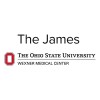Stereotactic Body Radiation Therapy and Transarterial Chemoembolization in Treating Patients With Liver Cancer That Cannot Be Removed by Surgery
Child-Pugh Class A, Child-Pugh Class B, Stage IIIA Hepatocellular Carcinoma

About this trial
This is an interventional treatment trial for Child-Pugh Class A focused on measuring SBRT
Eligibility Criteria
Inclusion Criteria:
Patients must have a diagnosis of hepatocellular carcinoma by at least one criterion listed below:
- Histologically confirmed
- Magnetic resonance imaging (MRI) or computerized tomography (CT) findings consistent with hepatocellular carcinoma
- Alpha fetoprotein (AFP) > 400 ng/mL AND evidence of at least one solid liver lesion > 2 cm regardless of specific imaging characteristics on CT or MRI
- Patients must be non-transplantable, unresectable, or medically inoperable and eligible for TACE as determined by a multi-disciplinary team
- Absolute neutrophil count >= 1.5 × 10^9/L
- Hemoglobin >= 9 g/dl
- Platelets >= 50,000/mm^3
- Prothrombin time (PT)/international normalized ratio (INR) and activated partial thromboplastin time (PTTa) =< 1.5
- Albumin >= 2.5 g/dL
- Alkaline phosphatase < 5 x upper limit of normal (ULN)
- Total bilirubin =< 2.0 mg/dL
- Aspartate aminotransferase (AST) and alanine aminotransferase (ALT) < 5 x ULN
- Creatinine =< 1.5 mg/dL and calculated creatinine clearance >= 60 mL/min or 24-hour urine creatinine clearance >= 60 mL/min
- Must have Childs-Pugh A or B liver disease
Patients must have no clinical signs of heart failure and meet New York Heart Association functional classification I or II defined as:
- Class I - patients with no limitation of activities; they suffer no symptoms from ordinary activities
- Class II - patients with slight, mild limitation of activity; they are comfortable with rest or with mild exertion
- Must have 1-3 liver lesions amenable to SBRT with tumor size < 15 cm (single lesion or sum)
- Must be able to undergo two MRI scans, one before study treatment begins and another shortly after SBRT
- Patients with extrahepatic disease, portal hypertension, or bilobar disease are allowed
- Normal renal function (creatinine < 1.5 mg/dL)
- Within 2 weeks of registration: patients must have vital signs, history/physical examination, laboratory studies (complete blood count [CBC] with differential, chemistries including liver function tests, AFP, creatinine clearance [CrCl] assessment, pregnancy test if needed)
- Life expectancy of at least 12 weeks in the opinion of investigator
- Patient has an Eastern Cooperative Oncology Group (ECOG) performance status of 0-2
- Ability to provide written informed consent obtained prior to participation in the study and any related procedures being performed
- Women of child-bearing potential (WOCBP) must have a negative pregnancy test within 14 days of the first administration of study treatment; urine human chorionic gonadotropin (HCG) is an acceptable pregnancy assessment
- Women/men of reproductive potential must be counseled on contraception/abstinence while receiving the study treatment
Exclusion Criteria:
- Childs-Pugh C liver function
- Major liver vascular invasion
- Prior radiation to the liver or other upper abdominal regions
- Must not have any evidence of bleeding diathesis or active gastrointestinal bleeding
- Any concurrent malignancy other than non-melanoma skin cancer, non-invasive bladder cancer, or carcinoma in situ of the cervix; patients with a previous malignancy without evidence of disease for >= 3 years will be allowed to enter the trial
- History of active connective tissue disease (scleroderma)
- Subjects who are breast-feeding, or have a positive pregnancy test will be excluded from the study; should a woman become pregnant or suspect she is pregnant while participating in this study, she should inform her treating physician immediately
- Medical contraindication to MR imaging (e.g. pacemakers, metallic implants, aneurysm clips, known contrast allergy to gadolinium contrast, pregnancy, nursing mothers, weight greater than 350 pounds)
Any serious and/or unstable pre-existing medical disorder (aside from malignancy exception above), psychiatric disorder, or other conditions that could interfere with subject's safety, obtaining informed consent or compliance to the study procedures, in the opinion of the investigator; this could include severe, active co-morbidities such as:
- Uncontrolled cardiac disease (hypertension, unstable angina, myocardial infarction within last 6 months, uncontrolled congestive heart failure, cardiomyopathy with decreased ejection fraction)
- Acute bacterial or fungal infection requiring intravenous antibiotics at time of registration
- Chronic obstructive pulmonary disease exacerbation or other respiratory illness requiring hospitalization or precluding study therapy within 30 days of registration
- Hepatic insufficiency resulting in jaundice and/or coagulation defects
Sites / Locations
- Ohio State University Comprehensive Cancer Center
Arms of the Study
Arm 1
Experimental
Treatment (SBRT, TACE)
Patients undergo SBRT on day 1 and TACE on day 2.
Outcomes
Primary Outcome Measures
Secondary Outcome Measures
Full Information
1. Study Identification
2. Study Status
3. Sponsor/Collaborators
4. Oversight
5. Study Description
6. Conditions and Keywords
7. Study Design
8. Arms, Groups, and Interventions
10. Eligibility
12. IPD Sharing Statement
Learn more about this trial
